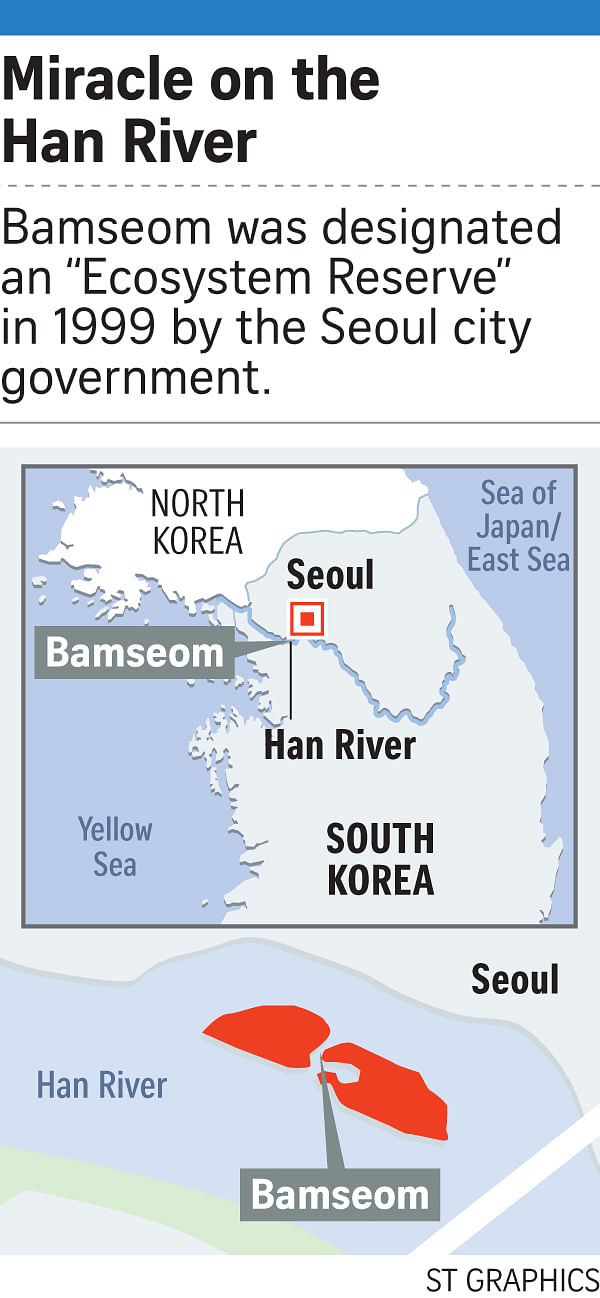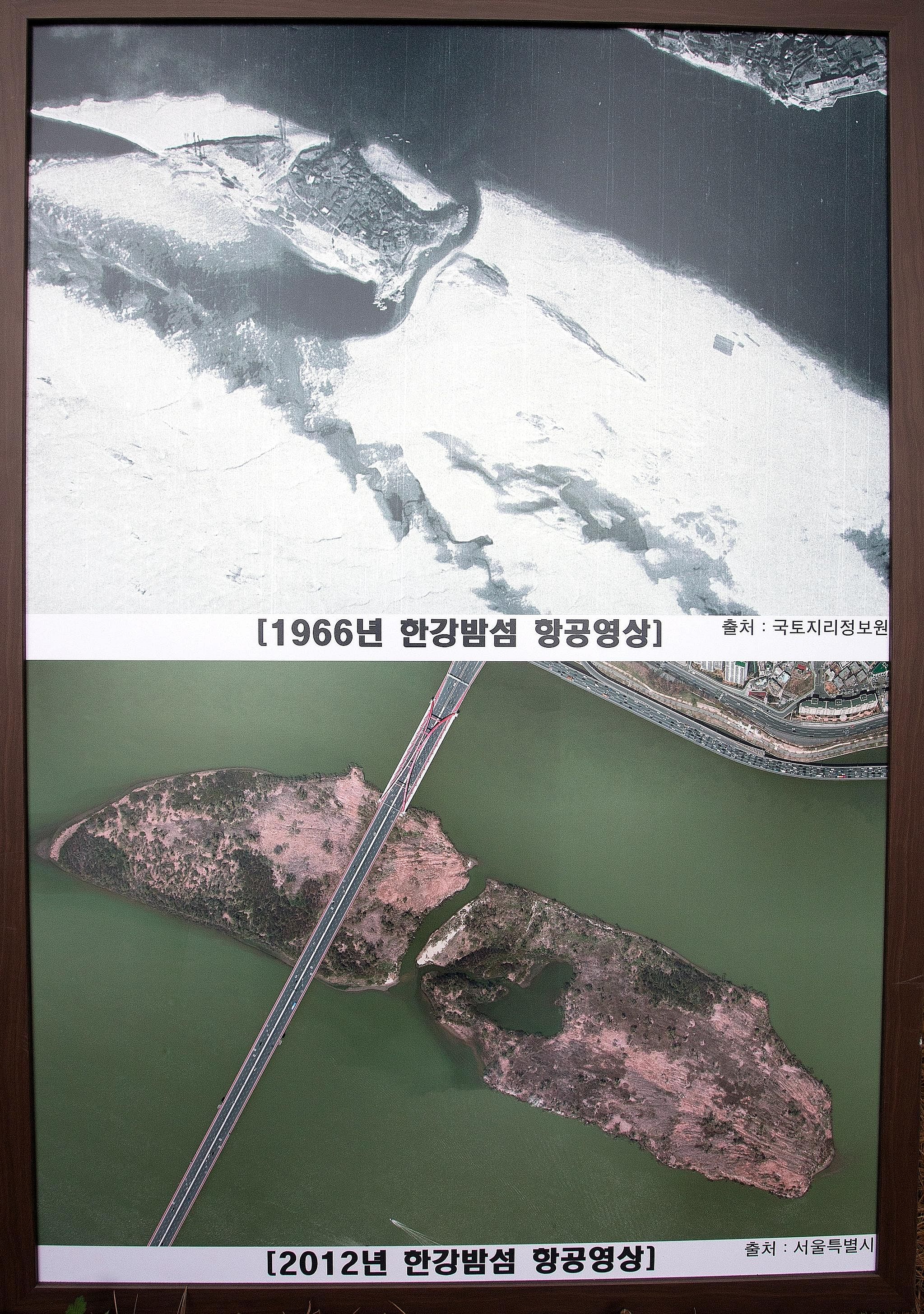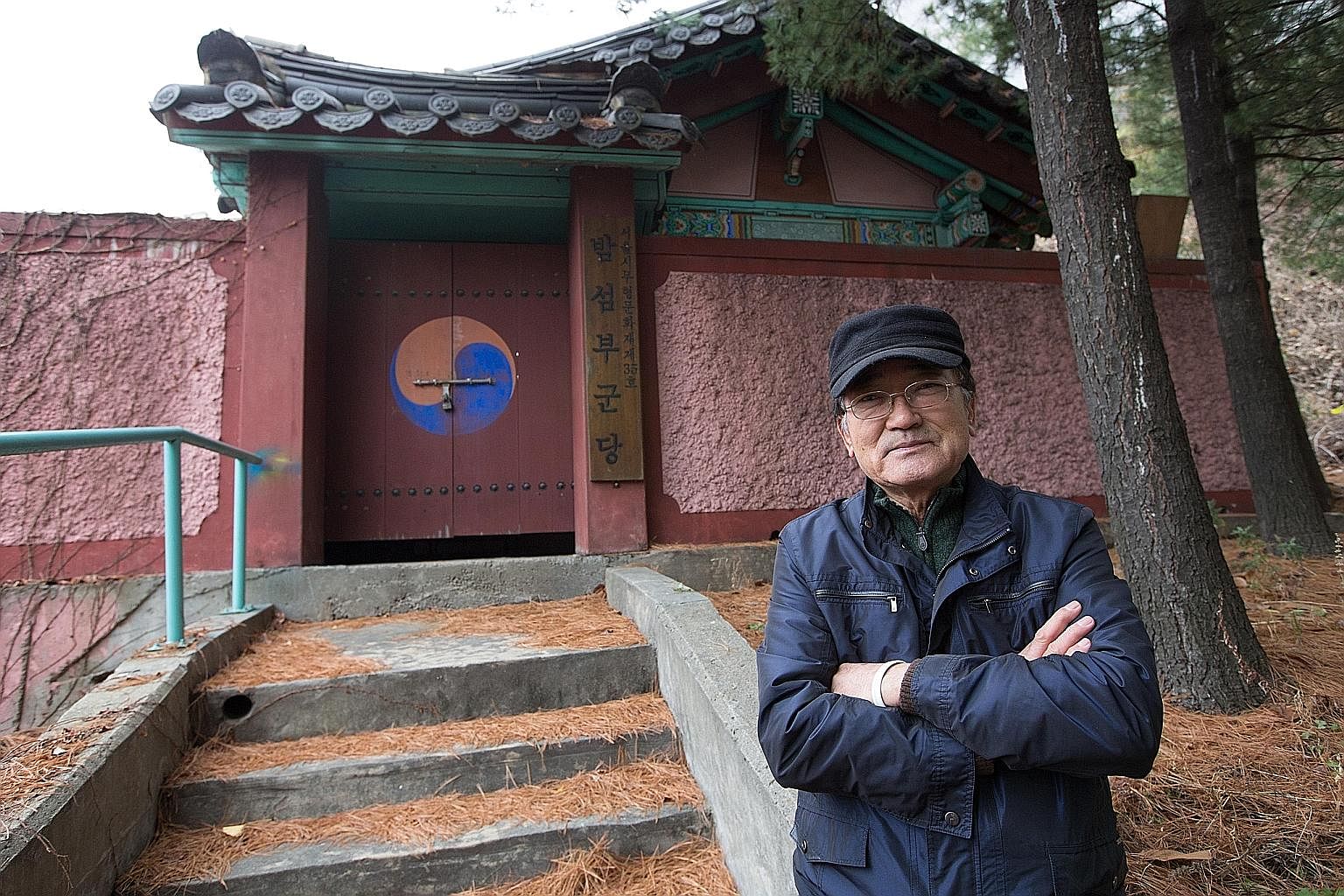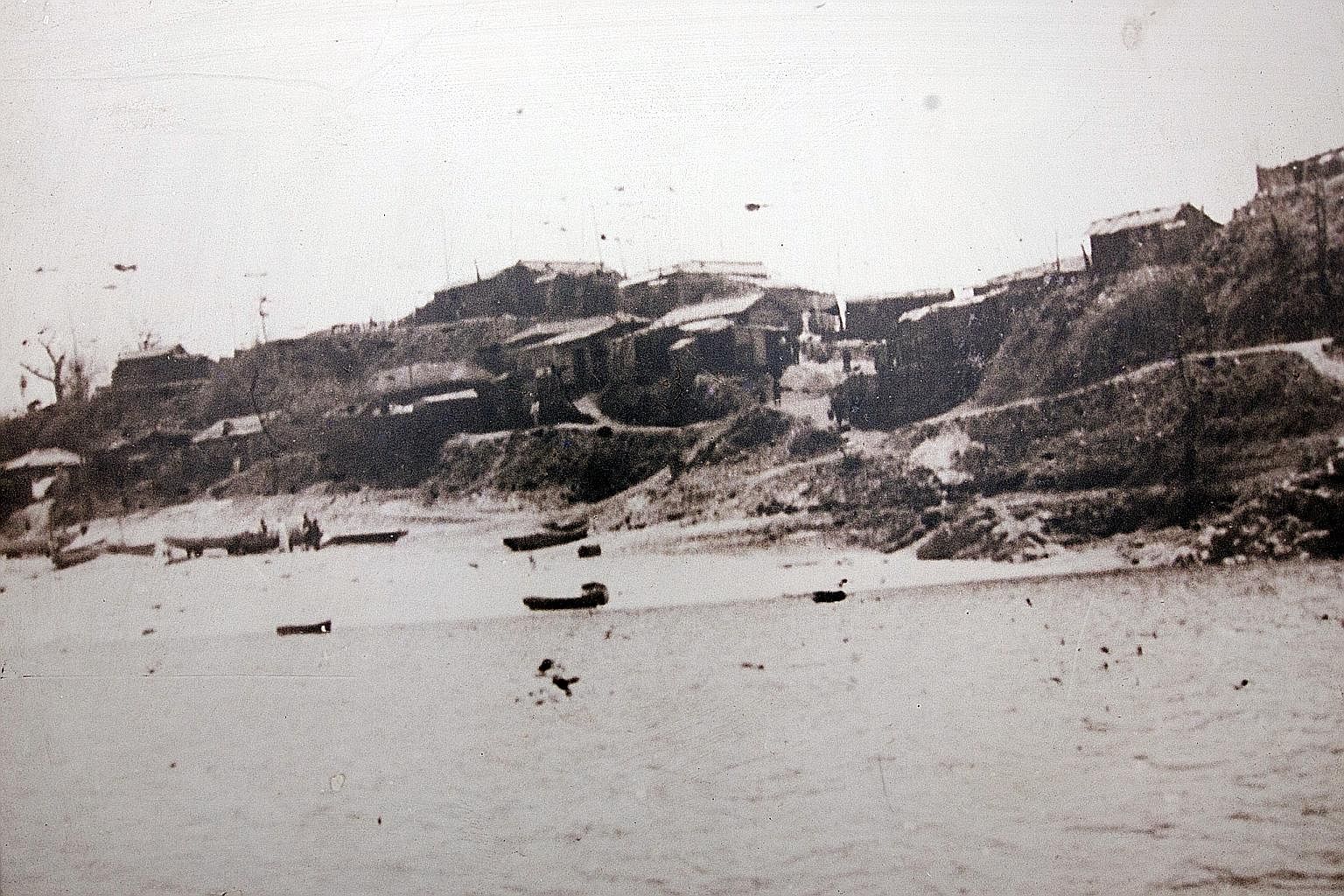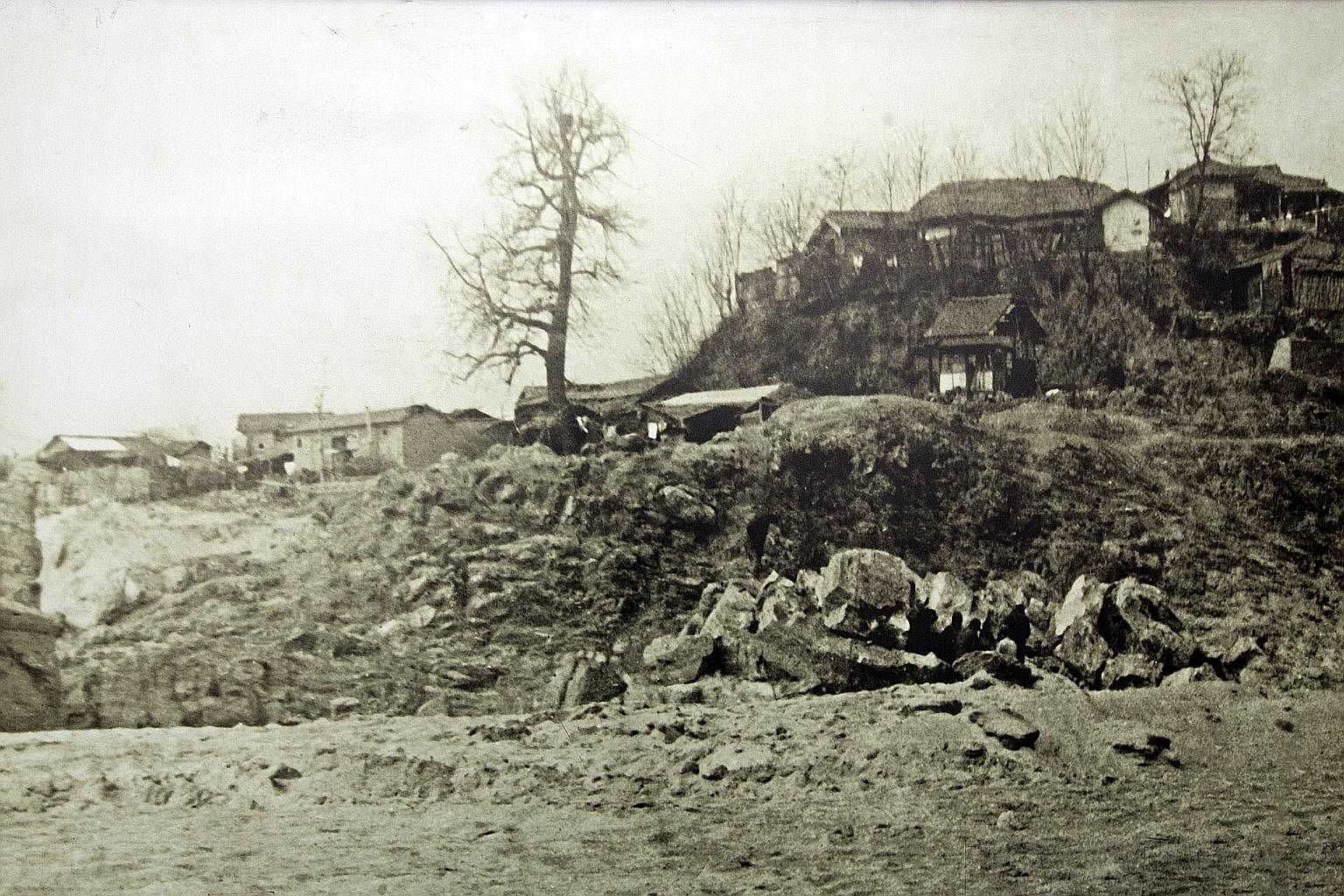A paradise with sandy white beaches where pure-minded people lived. That's how Yoo Deok Moon describes Bamseom, once his island home in the middle of the Han River running through central Seoul.
His heart is still there, even though it has been 47 years since he and more than 400 residents were relocated to the mainland as part of the capital city's redevelopment plans.
"I'd tell my children about life in Bamseom, how we used to swim in the river and catch eel for dinner, and they think it could be fun to live there," said the 76-year-old father of three, reminiscing about the good old days.
 Bamseom - which means chestnut island in Korean - was "reborn" after its demolition as the river deposited sediment and sand, expanding its area by about 4,400 sq m a year. It is now about 280,000 sq m, half the size of Singapore's Coney Island and six times larger than its original area. PHOTO: KIM JINHA
Bamseom - which means chestnut island in Korean - was "reborn" after its demolition as the river deposited sediment and sand, expanding its area by about 4,400 sq m a year. It is now about 280,000 sq m, half the size of Singapore's Coney Island and six times larger than its original area. PHOTO: KIM JINHA Once home to prisoners during the Goryeo dynasty from 918, chestnut-shaped Bamseom - which means chestnut island in Korean - was blown up in 1968 to ease flooding and make landfill for nearby Yeouido Island, which has become Seoul's main financial district and where the National Assembly is located.
What has happened since the island's demolition is literally a "Miracle On The Han River" - a term coined to describe South Korea's post-war economic boom.
